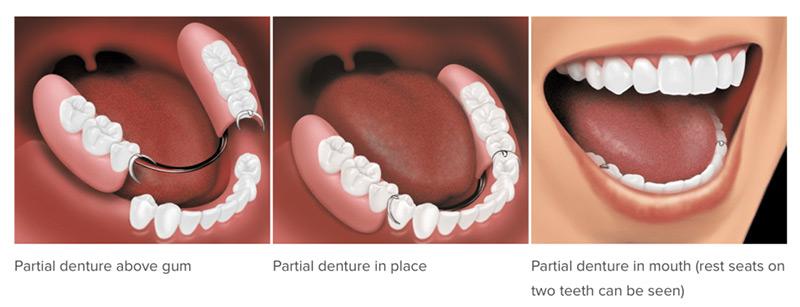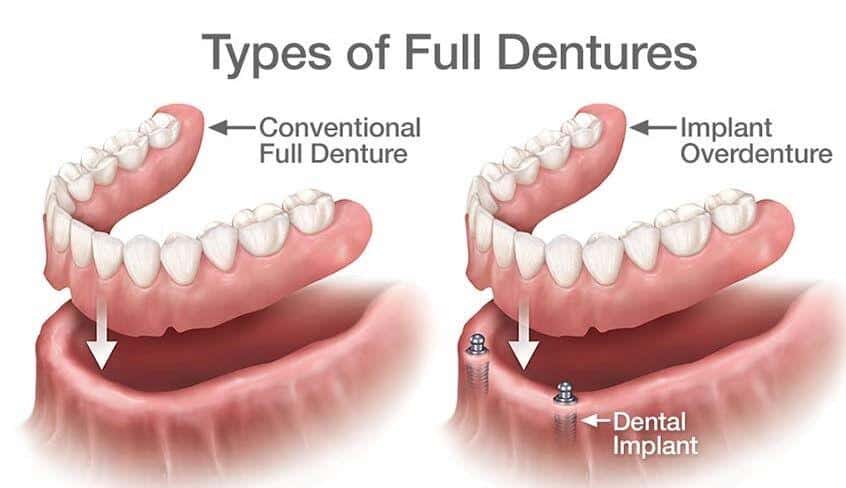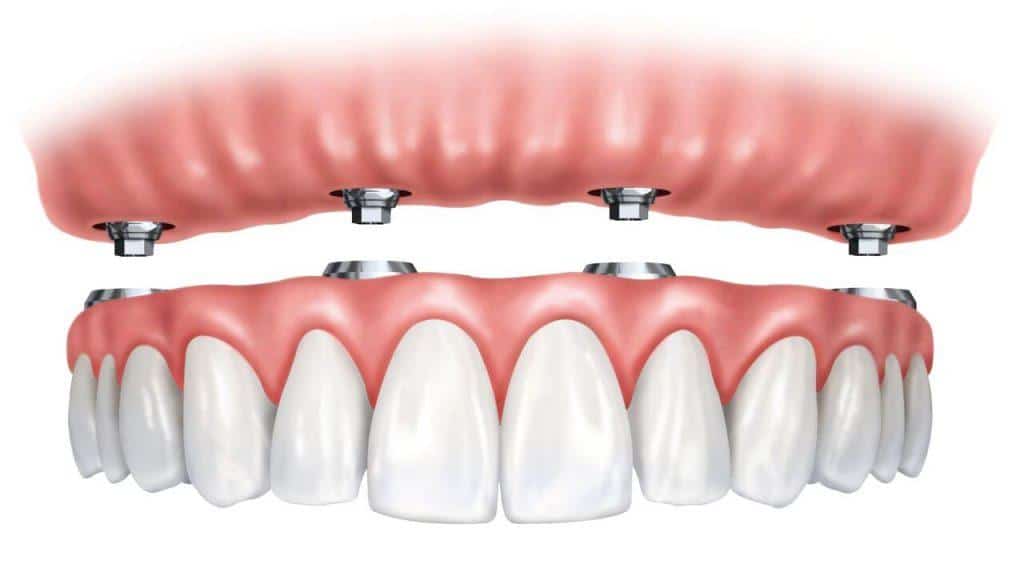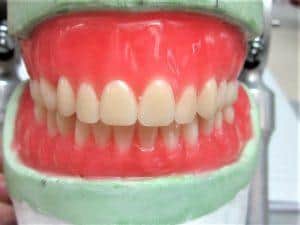What are dentures?
Dentures are removable artificial teeth worn to replace missing teeth. Dentures are usually made of acrylic (plastic) or a combination of acrylic and metal. Newer materials such as Valplast is used for flexible plastic dentures without metal clasps and hooks.
It is interesting to note that conventional removable dentures are becoming less popular due to the easy availability and strength of dental implants to replace missing teeth.
Are there different types of dentures?
There are three types of dentures:
- Partial Dentures – used to replace one or more missing teeth
- Complete Dentures – used to replace all the upper and/or lower teeth
- Implant-supported Complete Dentures – a more stable and retentive version of conventional full dentures. Implants can help to stabilize lower complete dentures that tend to be loose.


The denture rests on the gum and against any remaining teeth adjacent to the space. The remaining teeth may be engaged with clasps and hooks for further retention.
Plastic (acrylic) dentures tend to be bulkier and more fragile than metal (cobalt chromium) base dentures. Metal-based dentures allow for sleeker designs and are more hygienic. Both partial and complete dentures can have plastic or metal bases.
Dentures at Elite Dental Group

Visit 1: Consultation and treatment planning
Your denture treatment goals and options for tooth replacement will be discussed. This is important so that you can have a reasonable idea of what to expect with the final prosthesis.
Examination of your mouth and current dentures can identify the source of current and future problems with your new denture(s). Very old dentures may have significant gaps on the fitting surface and this causes irritation and overgrowth of the soft tissues. Corrective and preventive measures will be discussed at this stage.
Some patients may require fillings or crowns in conjunction with the design and fabrication of their new dentures.
Photos and preliminary moulds of your mouth, teeth and current dentures will be made and we will discuss with you on the type and design of denture that would be best suited for you.
Visit 2: Master moulds and bite records
A 2nd set of more accurate moulds is made based on the preliminary moulds. Your bite relationship is then recorded. For some cases, a facebow record may also be taken.
The colour of the future denture teeth is also selected at this stage.
Visit 3: First Try in
The trial (wax) dentures are checked for fit, stability and integration with the rest of your mouth.
 The colour of the denture teeth is checked to see how well these blend in. At this stage, if the colour needs tweaking, the denture is returned to the lab.
The colour of the denture teeth is checked to see how well these blend in. At this stage, if the colour needs tweaking, the denture is returned to the lab.
Your dentist may also adjust the tooth positions to achieve a certain look.
Visit 4: Second Try in
If your trial dentures had to undergo extensive adjustments (for eg: tooth position, tooth colour) one more trial visit is scheduled to ensure that the final dentures are satisfactory. Adjustments can easily be made and should be done at the trial denture stage.
Visit 5: Fitting your new dentures
First, the fitting surface that will rest on your gum and against your teeth is checked for pressure spots. These spots are trimmed to prevent excessive friction that may cause ulceration.
Once the denture is seated with uniform pressure, your new bite will then be checked and refined so that there will be even biting pressure on both sides and on your natural teeth.
We will then advise you on the best way to maintain your new dentures.
As you continue to wear your dentures, constant pressure on the gums will cause resorption and shrinkage of the underlying bone and gums. Over time, this will make your dentures loose and ill-fitting. Your dentures need periodic relines and adjustments to ensure proper fit. Eventually, the dentures will need to be remade.





